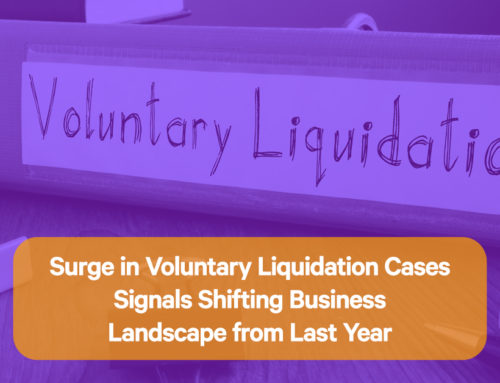If your business finds itself struggling financially and wants to enter into a formal insolvency procedure, creditor’s voluntary liquidation is one of the most common options. This is because doing so comes with speed, flexibility and considerably low costs. That is not to say, though, that the other procedures available to you do not also have their place. Throughout this article, we will be talking specifically about top benefits of an administration and why entering into administration could be the best way forward for your business.
What Does it Mean to Enter into Administration?
When your company enters into administration, it means that said company becomes insolvent and, as such, is put under the management of licensed insolvency practitioners. As the director of the company, you will be able to appoint your own administrators using a court process. This means that the administration will be effective in protecting the company as much as it possibly can.
What Happens When You Enter into Administration?
When you enter into administration, your company will be declared insolvent. It’s more than likely the court will appoint insolvency practitioners as your administrators, and this will place a moratorium of 8 weeks on your business, where all legal actions will be stopped. This can be beneficial as it stops creditors from forcing your company into liquidation. During this period, your business will be given the opportunity to work out the most effective way that you can move forward so that you can continue trading and also work out how to pay off any liabilities that your business might owe.
The Advantages of Administration
There are a number of benefits that come with entering into administration, and these include but are not limited to the following:
- It’s One of the Best Deals for Your Creditors
Any of the funds which are realised in administration will be greater than those realised in liquidation. This is because the business may have continued to trade throughout the administration process, or thanks to a pre-packaged sale, the value of different assets have been successfully preserved. Third parties are normally keen on bidding higher in an administration because this is viewed as a rescue procedure rather than a complete insolvency, like what would happen if your company were to enter into liquidation.
- The Moratorium
The only process out there which places an automatic hold on any and all legal proceedings is administration. This means that if creditors are trying to force your business into liquidation, they will be prevented from doing so. It means that if your organisation currently finds itself under pressure, then you are able to give yourself a bit of breathing space in order to properly sit down, consider your company’s affairs with experts and devise the best way forward. It is possible for creditors to seek permission from the court or from the administrator to carry on with their legal proceedings even during this period, but you tend to find that these requests don’t get granted. This is because allowing such enforcement will stop the administrator from being able to achieve what the entire purpose of the administration is in the first place.
- Shareholder Approval
As stated above, though creditor’s voluntary liquidation is a popular choice for businesses that find themselves struggling financially, it does require the agreement of 75% of shareholders. Some shareholders may well be hesitant to agree to as much if they are trying to force the company into liquidation. When this is the case, a company is left with two choices; these are compulsory liquidation or administration. Out of the two of these options, the administration gives directors more control and is usually the preferred option. It is also the option which is likely going to generate better results for creditors.
- Company Voluntary Arrangements
During the moratorium period, businesses are going to be able to consider different exit routes that they could consider in order to put themselves into a better position financially and also pay off their creditors in the process. One of the more popular routes is to enter into a company voluntary arrangement (otherwise known as a CVA). Granted, you do have the ability to enter into a CVA without going into administration, but if you choose to do this, creditors still have the chance to enforce action against you and your business. If you need a bit of breathing space, then putting forward a proposal for a CVA via the administration route is preferred.
Are There Any Downsides to Administration?
When you consider the above, the benefits to administration seem clear-cut. This begs the question, are there any disadvantages to going down this route? There are some, and you should be sure to consider these before you properly commit to the administration process. They include:
- Cost
Costs can mount up, given how much of a hands-on approach a good administrator needs to have on the process. You need to make sure you are taking this into account when considering the different funds your business has available.
- Investigations
As is the case with liquidation, if you enter into administration, then the administrator needs to examine and report on what your actions as a director have been like. This can have negative repercussions and lead to your disqualification as a director.
- Damage Brand Reputation
Administration is a very public procedure, and as such, people will be aware that you have entered into it. This could potentially mean that your brand image is damaged and you receive negative publicity as a result.
Do You Need Help with Administration?
If you are considering entering into administration, then the most important thing that you need is a good administrator. At Leading UK, we will be able to help you with this as we will sit down with you in order to understand your business further and help you plan the best way forward. If you have any questions or require further information, do not hesitate to get in touch.






